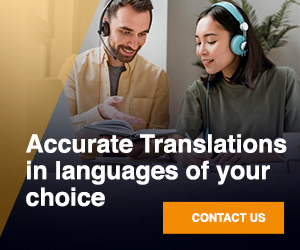Transcription
Audio/Video Translation Outsourcing – An Attractive Option
In this age of information, all information is valuable, and made accessible across geographic and language barriers through translation. This holds true not just for text but for audio-video content too, thus the growing need for audio-video translations.
When choosing a company for an audio/video translation, you would do well to choose carefully. Audio/video translations are often complex, long and arduous tasks and can also cost a tidy sum.
The kinds of content that may require an Audio- Video Translation
Audio- Video Content requiring translation may include:
- Documentaries
- Films
- Reports
- Conversations
- Presentations etc
When doing an audio-video translation, like in text, the content expands and this can present a unique challenge for maintaining the length of the program, and lip synchronization. Often content may also require to be transliterated or rephrased in a way to keep it accurate, even while maintaining the feel of the source language.
Steps in Audio-Video Translation
The process of converting audio-video files from one language to another involves multiple steps.
- Transcription – Listening and watching the original audio-video file and putting it down into text.
- Translation – A qualified and experienced translator then renders the document into the language that it needs to be translated into.
- Voiceover – This is a delicate process as the narrator’s voice should contain no accent, unless required.
- Timing and lip syncing – the last step is to time the voice recording with the video pictures and ensure that the recording is in sync with the video.
On the whole the translation process requires a team of qualified and experienced people who are proficient in both the languages, the source and the foreign language. Since the process of audio-video translations requires multiple skills and technical expertise, it is best outsourced to a good company like

